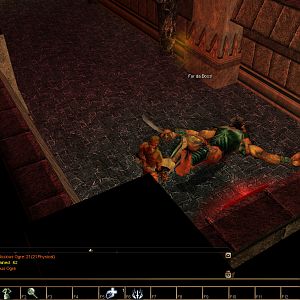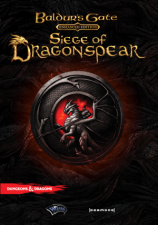-

- Forums
- Chatrooms
- Gallery
- Gameplay Videos
- Upload
- Articles
- Mod Reviews
- Shop SP: Games, Movies, Books

|
History
of the Dales and the Elven Court
|
The founding of the Dalelands long preceded the creation of any of the existing Dales by hundreds of years, and the year numbering system known as Dalereckoning is actually a commemoration of humankind being given permission to settle in the lands north and west of the Inner Sea. Most of the current Dales are relative newcomers, the older having been abandoned, destroyed, or overrun long ago. In those ancient days, when Suzail and Chondathan (now called Saerloon) were mere coastal trading posts, the elves who ruled this forest entertained a request from settlers from the East; refugees and farmers from far-off Impiltur and Damara. This request was to farm and settle the borders of the great forest Cormanthor, in particular the rich delves and dales along the rivers Arkhen and Ashaba.
These newcomers did not wish to lumber or clear the inhabited forest, but only to settle on the rich territories on its edges, and unlike some other settlers (early Sembia comes to mind) were willing to ask permission. The lords of the Elven Court granted that request in retum for aid from these new Dalelanders against outside aggression, both monstrous (orcs and goblins from the lands of Thar) and human (the rising powers in Cormyr and Sembia). In commemoration of this pact, humans and elves raised the Standing Stone that is now seen where the Moonsea Ride reaches Rauthauvyr's Road, the road from Essembra to Hillsfar. It is from the date of the raising of this stone that Dalereckoning is counted.
According to the pact made, the Dalesmen would only settle those regions that were unforested or unclaimed by the elves. As the elven woods receded under the axes of further invaders and settlers, old Dales perished and new ones came into being along the borders of the woods. People, both good and bad, have raised petty nations in the Dalelands since, though any one Dale that turned against the pact would have to deal with the others. Each of the Dales is a large swath of farms and fields, with a few scattered settlements and usually one central marketplace, capital, or Dale center. These centers are often, but not always, named after the Dales they are in, adding to the confusion as to what is a Dalelands territory.
The Dales are not city-states, for their largest groupings of population rate as towns at best, and they lack the defensive walls common throughout the Heartlands. They are neither true nations in the fashion of Cormyr or Sembia, and occupy a gray middle ground wherein they are nothing more, or less, than Dales. Each Dale has slightly different laws, customs, and military organizations. Many rely on the work of charismatic heroes and adventuring companies for aid in times of trouble, and a large number of these individuals use the region as a base.
This attraction for adventurers is further increased by the large number of elven and pre-elven ruins in the area and the departure of the Elven Court for Evermeet, leaving the woods open for exploration and exploitation. The history of the Dales is filled with battles and attacks on its various members. In the Year of the Worm (1356 DR), Scardale, under the command of Lashan Aumersair, launched a number of swift attacks, conquering a number of the surrounding Dales. A coalition of forces from the others, as well as Sembia, Cormyr, and Zhentil Keep crushed the invaders and occupied Scardale. During the Time of Troubles (1358 DR/0 PR), Shadowdale was attacked by Zhentil Keep. More recently, the Dalelands have committed forces to a unified army under King Azoun IV of Cormyr to turn back the Tuigan Invasion (1360 DR).


